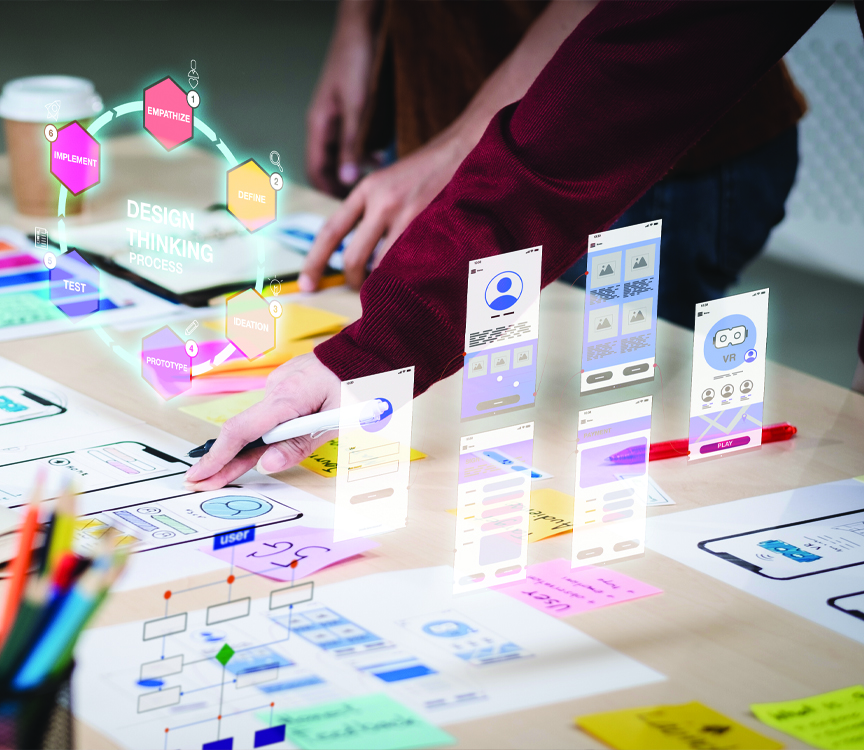UX & UI DESIGN
Crucial for creating digital experiences that are intuitive, attractive, and functional, key components of successful marketing campaigns
UX (user experience) and UI (user interface) design are critical elements in the creation of digital products, whether it's a website, app, or software. UX design focuses on the user's experience and the way they interact with the product, while UI design deals with the visual and interactive elements that make up the product's interface.
Effective UX design ensures that users can easily navigate and interact with a product, and that their needs and expectations are met. It involves research and testing to understand the user's behaviour and preferences, and the creation of wireframes and prototypes to refine the product's design.
UI design is concerned with the look and feel of a product's interface, and how it can engage and delight users. It includes colour schemes, typography, iconography, and other design elements that create a visual language that reflects the product's brand identity and values.
Together, UX and UI design play a crucial role in creating digital products that are both aesthetically pleasing and easy to use, leading to higher engagement, retention, and customer satisfaction.
DESIGNING FOR UX (USER EXPERIENCE)
The process of creating digital products that are intuitive, easy to use, and provide a positive experience for users. This includes websites, apps, software, and other digital products. The goal of UX design is to understand the user's needs and behaviour, and to design a product that meets those needs in a way that is both functional and enjoyable.
To achieve this, UX designers must conduct research to gain a deep understanding of the user's needs, preferences, and behaviour. This can involve user interviews, surveys, and other forms of data collection. The insights gained from this research are used to create user personas, which help designers to understand the needs of different user groups and to design a product that meets those needs.
UX designers also create wireframes and prototypes to test the usability of the product and to gather feedback from users. This allows designers to refine the product's design and functionality to ensure that it is easy to use and provides a positive experience for the user.
In addition to the functional aspects of a product, UX designers are also concerned with the emotional experience of using a product. They strive to create a product that is engaging, enjoyable, and memorable. This can involve the use of visual and interactive design elements, such as colour schemes, typography, iconography, animations, and other design elements that create a cohesive and memorable experience for the user.
DESIGNING FOR UI (USER INTERFACE)
The process of designing the visual and interactive elements that make up a digital product. This includes websites, apps, software, and other digital products. The goal of UI design is to create a visually pleasing and intuitive interface that makes it easy for users to interact with the product.
UI designers use a variety of tools and techniques to create a cohesive and engaging visual design. This can include the use of colour schemes, typography, iconography, and other design elements that create a visual language that reflects the product's brand identity and values. They also work to create a user interface that is easy to navigate and provides clear feedback to the user.
To achieve this, UI designers use tools such as wireframes, mockups, and prototypes to test the usability of the product and to gather feedback from users. This allows designers to refine the product's design and functionality to ensure that it is easy to use and visually appealing.
UI designers are also responsible for creating responsive designs that work across different devices and screen sizes. This involves creating designs that adapt to different screen sizes and orientations, and that provide a consistent and intuitive user experience across different platforms.


